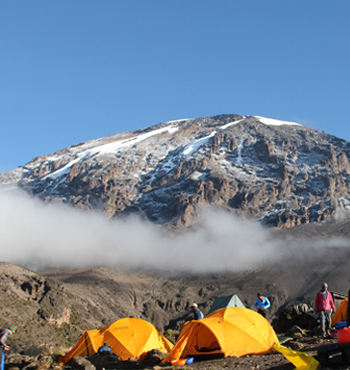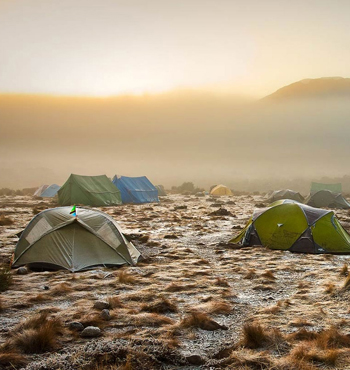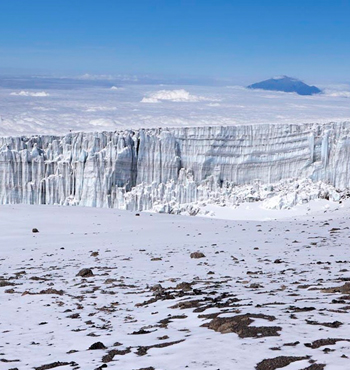- Pangani St , Arusha - Tanzania
- +255 692 159 700
Lemosho Route
The Lemosho Route is often considered the most beautiful of all the trekking trails up Mount Kilimanjaro. It crosses the entire Shira Plateau from west to east in a pleasant, relatively flat hike. Crowds are low until the route joins the Machame route near Lava Tower.
It is one of the newer routes on the mountain and shares a portion of the same path as the Machame route, although it holds a few advantages over that route that make worth considering, particularly for travellers who have some extra time.
Starting on the western flanks of Mount Kilimanjaro at the Londorossi Gate, the Lemosho Route wanders its way up one of the more remote sections of the mountain.
The trail takes hikers through a beautiful rainforest where they might have the chance to spot wildlife along the way. Black and white colobus monkeys are routinely seen in the forests, as are blue monkeys, small lizards and a wide assortment of birds. From there, the path wanders out onto the Shira Plateau, crossing it from west to east on relatively flat and easy-to-walk terrain.
The early days on the Lemosho Route provide plenty of solitude, as this trail sees far less traffic than the Machame route and Marangu route. This makes an already great trekking adventure even more spectacular as at times it will feel like you have the entire mountain to yourself.
Eventually, however, the Lemosho merges with the Machame route, and the amount of traffic begins to increase. But if you’re looking for a little peace in the early going of the climb, this is a great option.
Because it follows the Machame Route for a portion of the climb, much of the same scenery is found on the Lemosho as well, including the Lava Tower and Barranco Wall. But, in those first few days, this trail offers some unique views of the surrounding landscapes that aren’t visible from any other place on the mountain.
Travellers will get the chance to wander through pristine rainforests and hike up to the Shira Plateau, where once above the tree line stunning vistas await.
Because of its remote nature and lengthier route, Lemosho takes a few extra days to trek. Most people spend seven or eight days on this trail, which causes the success rate to increase fairly dramatically.
Lemosho Route Frequently asked questions
Find Out Answers Here
The Lemosho route is considered one of the easiest routes on Kilimanjaro as its longer itinerary allows for better acclimatization. However, hikers will still need to ascend the Barranco Wall and climb steeply on summit night. No technical climbing is required but a good level of fitness is highly recommended. You can read more on training to climb Kilimanjaro and our Kilimanjaro training program page to help you prepare accordingly.
The exact trekking distance for the Lemosho is 71km or 43 miles. The shortest number of days required for the Lemosho Route is 7 days, but by the time you have added on arrival and departure days, it is 10. However, as it is a much longer approach route it is best done over 8 or 9 days to increase your chances of success.
Due to its longer length profile, summit success rates on the Lemosho are one of the highest on the mountain. Whilst there are no official statistics, the average success rate across all operators is 90% for the 8-day trek and an 85% success rate for the 7-day trek. However, We have a success rate of over 95% for the 8-day Lemosho route and a 92% success rate for the 7-day option. Read more about how many days it takes to climb Kilimanjaro to know why we recommend longer treks.
The Lemosho Route is considered to be the most scenically beautiful of all the routes. The route takes trekkers from the west side of the mountain through the lush rainforest before joining up with the Lemosho Route to cross the spectacular Shira Plateau. The route takes in the west and south of the mountain and the views are incredible, particularly from the southern circuit.
"They Call it Safari, We call it Adventure"
At Eland Adventures company ltd you can be confident of finding the best price available for any Tanzania safari.
Main Office
- +255 692 159 700
- info@elandadventures.com
- Arusha, Tanzania
Contact Info
- info@elandadventures.com
- +255 692 159 700
- Pangani St , Arusha - Tanzania
Why Choose Us
Cozy Lodging
Competitive Pricing
100% specialized in Tanzania
Comfortable Rides
Copyright © 2024 Eland Adventures. All rights reserved | Design By: Kajanja Mussa







